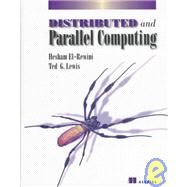-- Detailed coverage of the growing integration between parallel and distributed computing.
-- Advanced approaches for programming distributed, parallel systems -- and adapting traditional sequential software.
-- Creating a Parallel Virtual Machine (PVM) from networked, heterogeneous systems.
This is the most up-to-date, comprehensive guide to the rapidly changing field of distributed and parallel systems.
The book begins with an introductory survey of distributed and parallel computing: its rationale and evolution. It compares and contrasts a wide variety of approaches to parallelism, from distributed computer networks, to parallelism within "processors (such as Intel's MMX), to massively parallel systems. The book introduces state-of-the-art methods for programming parallel systems, including approaches to "reverse engineering" traditional sequential software. It includes detailed coverage of the critical scheduling problem, compares multiple programming languag








